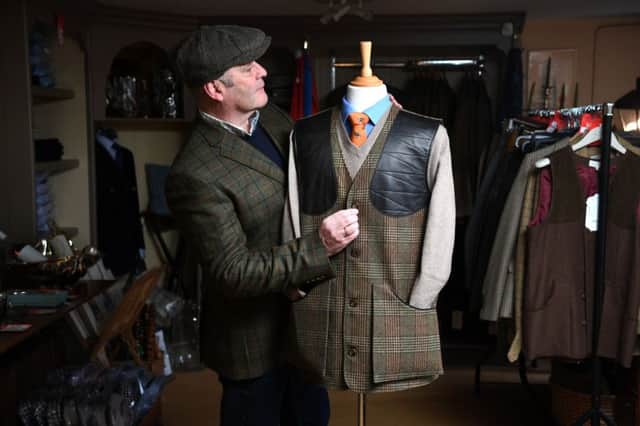Suits you, squire: Uniform tradition that marks out the moors


The enduring tradition among sporting estates of maintaining bespoke tweeds to distinguish their staff from those over the moor, is now a £1m industry, according to new figures.
Even when the shooting is poor, the fashion for sporting the smartest checks is now said to have the region’s specialist tailors turning out a new set of tweeds every other year, for every gamekeeper, ghillie and stalker in the Dales, North York Moors, Nidderdale and the Peak District.
Advertisement
Hide AdAdvertisement
Hide AdOver the last two seasons, the nation’s 190 grouse estates spent an estimated £1.1m on tweed.
The Yorkshire Dales Moorland Group and the North Yorkshire Moors Moorland Organisation, who compiled the figures, compared the tradition to that of clan tartans – with a different pattern of tweed associated with each estate, and only those who work there entitled to wear it.
At the Grassington and Coniston estate in the Dales, a signature tweed has been commissioned from Campbell’s of Beauly, the Queen’s tailor in the Scottish Highlands. Sonya Wiggins, coordinator of the Dales Moorland Group, whose husband, Harvey, is gamekeeper there, said it was “exciting” to see the way some estate tweeds had evolved over the years while others had continued to use original patterns from a century ago.
She said: “Estate tweed is very much made-to-measure, not bought off-the-peg.”
Advertisement
Hide AdAdvertisement
Hide AdMichele Shield, who owns the long-established Isaac Walton tailoring business in Newcastle, said: “These are the Rolls-Royce of uniforms and it’s wonderful to see the tradition continue.
“It’s like a mechanic in a workshop putting on a pair of overalls, except that these are beautiful and practical items of clothing. The lanolin in the wool makes any rainwater just roll off.”
The tweed itself, sourced from the West Riding, the West Country and Scotland, can be designed to match with the local topography, allowing gamekeepers and ghillies to blend in with their surroundings while out on the moors.
Ms Shield said one client had specified a motif of thicket, foxglove and owl in flannel grey with a claret and white overcheck, in keeping with the estate colours.
Advertisement
Hide AdAdvertisement
Hide AdIn Helmsley, on the edge of the North York Moors, Jeremy Shaw, who runs Carter’s Countrywear, described the trade in tweed as “a massive part of the rural economy”.
He said: “They have a certain style that never goes out of fashion. And they keep you warm. When was the last time you saw a sheep shivering?”
Tina Brough, of the North Yorkshire Moors Moorland Organisation added: “A full set of gamekeeper tweeds, which also includes a hat, averages at around £1,000 per gamekeeper.
“The investment continues each season and it’s this enduring tradition of estate tweed that helps to support local communities.
“Without grouse shooting, many local businesses would not survive.”